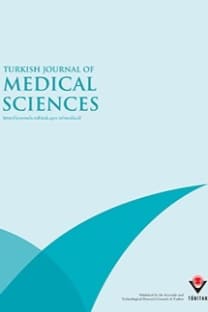Possible role of toxoplasmosis in patients with first-episode schizophrenia*
To determine the possible relationship between toxoplasmosis and patients with first-episode schizophrenia (FES). Materials and methods: Seventy-three subjects with FES (15-54 years old; mean: 23.4 years) and 40 healthy individuals (20-54 years old; mean: 30.3 years) were enrolled in the study. Most of the FES patients (90.4%) and the control individuals (95.0%) were male. Specific IgG and IgM antibodies to Toxoplasma gondii were investigated by enzyme-linked immunosorbent assay (ELISA), and the total amount of antibodies was investigated with the Sabin-Feldman dye test (SFDT). Results: Compared to the control individuals, study subjects had significantly more toxoplasmosis-like symptoms and more cats in the household; they were less likely to live in apartments and more likely to live in ground-floor houses. They did consume more uncooked meat, unpasteurized goat’s milk, and chicken eggs; had more contact with soil; and were living less often in urban areas and more often in rural areas. Serum samples from 32 (43.8%) and 25 (34.2%) of 73 patients with FES were seropositive for T. gondii when tested by ELISA IgG and SFDT, respectively. Out of 40 serum samples from control subjects, 13 (32.5%) and 15 (37.5%) were found positive for T. gondii by ELISA IgG and SFDT, respectively. In patients with FES, 17 (68%) out of 25 who were SFDT-positive were also positive by ELISA IgG test, while 15 out of 48 (31.3%) SFDT-negative serums were positive by ELISA IgG. In the control group, 11 out of 15 SFDT-positive serum samples (73.3%) were also positive by ELISA IgG test, while 2 out of 25 SFDT-negative serum samples were positive by ELISA IgG. Conclusion: The present study shows that toxoplasmosis might be associated with first-episode schizophrenia. More studies are needed to prove the association between T. gondii infection and patients suffering from schizophrenia.
Possible role of toxoplasmosis in patients with first-episode schizophrenia*
To determine the possible relationship between toxoplasmosis and patients with first-episode schizophrenia (FES). Materials and methods: Seventy-three subjects with FES (15-54 years old; mean: 23.4 years) and 40 healthy individuals (20-54 years old; mean: 30.3 years) were enrolled in the study. Most of the FES patients (90.4%) and the control individuals (95.0%) were male. Specific IgG and IgM antibodies to Toxoplasma gondii were investigated by enzyme-linked immunosorbent assay (ELISA), and the total amount of antibodies was investigated with the Sabin-Feldman dye test (SFDT). Results: Compared to the control individuals, study subjects had significantly more toxoplasmosis-like symptoms and more cats in the household; they were less likely to live in apartments and more likely to live in ground-floor houses. They did consume more uncooked meat, unpasteurized goat’s milk, and chicken eggs; had more contact with soil; and were living less often in urban areas and more often in rural areas. Serum samples from 32 (43.8%) and 25 (34.2%) of 73 patients with FES were seropositive for T. gondii when tested by ELISA IgG and SFDT, respectively. Out of 40 serum samples from control subjects, 13 (32.5%) and 15 (37.5%) were found positive for T. gondii by ELISA IgG and SFDT, respectively. In patients with FES, 17 (68%) out of 25 who were SFDT-positive were also positive by ELISA IgG test, while 15 out of 48 (31.3%) SFDT-negative serums were positive by ELISA IgG. In the control group, 11 out of 15 SFDT-positive serum samples (73.3%) were also positive by ELISA IgG test, while 2 out of 25 SFDT-negative serum samples were positive by ELISA IgG. Conclusion: The present study shows that toxoplasmosis might be associated with first-episode schizophrenia. More studies are needed to prove the association between T. gondii infection and patients suffering from schizophrenia.
